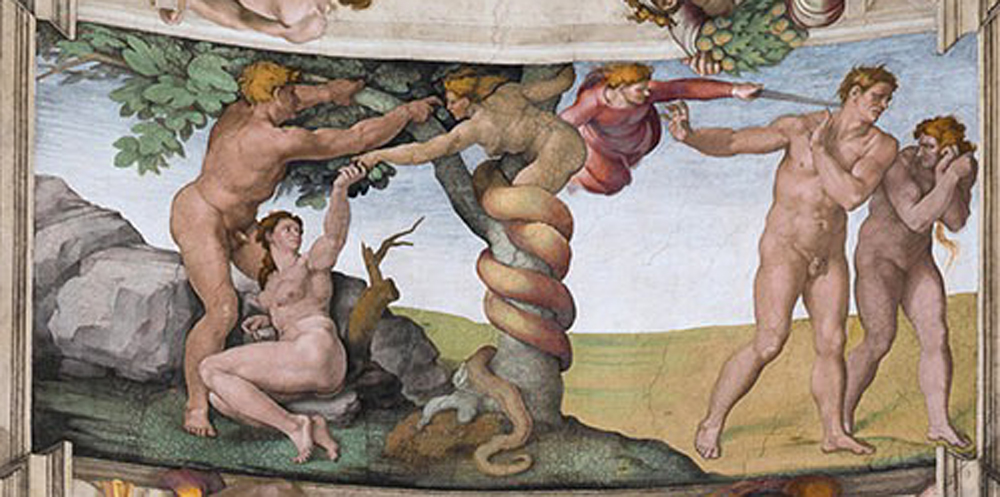Michelangelo, Adam, Eve, and the Serpent

1508-1512
Fresco
Sistine Chapel Ceiling, The Vatican
Starting in the early 13th century, many images of the serpent in Eden give it a woman's face. But making it female from the waist up is Michangelo's own innovation, most likely inspired by the Echidna in Hesiod's Theogony, 295-313:
Then Keto bore another invincible monster,
in no way like mortal men or the deathless gods;
yes, in a hollow cave she bore Echidna, divine
and iron-hearted, half fair-cheeked and bright-eyed nymph
and half huge and monstrous snake inside the holy earth,
a snake that strikes swiftly and feeds on living flesh.
…
First she gave birth to Orthos, the dog of Geryones,
and then she bore a stubborn and unspeakable creature,
Kerberos, the fifty-headed dog of Hades….
…
Her third child was the loathsome Hydra of Lerna.
In modeling the serpent on Echidna, Michelangelo is taking a hint from Hesiod that was heeded by other classically inspired artists portraying Sin as fair above, false below, and endlessly fecund. Milton used this model for the character named Sin (Paradise Lost, II, 650-59), who also mothers "hell-hounds." Spenser used her for Errour, who mothers "a thousand yong ones" in The Faerie Queene (I, 119-35).
Also untraditional are the placement of Adam and Eve both on the same side of the tree and Adam's reaching for the fruit himself. (In Genesis, he receives it from Eve.)
Read more about images of Adam and Eve.
Source: Cropped from photograph by Aaron Logan via this page at Wikimedia Commons.